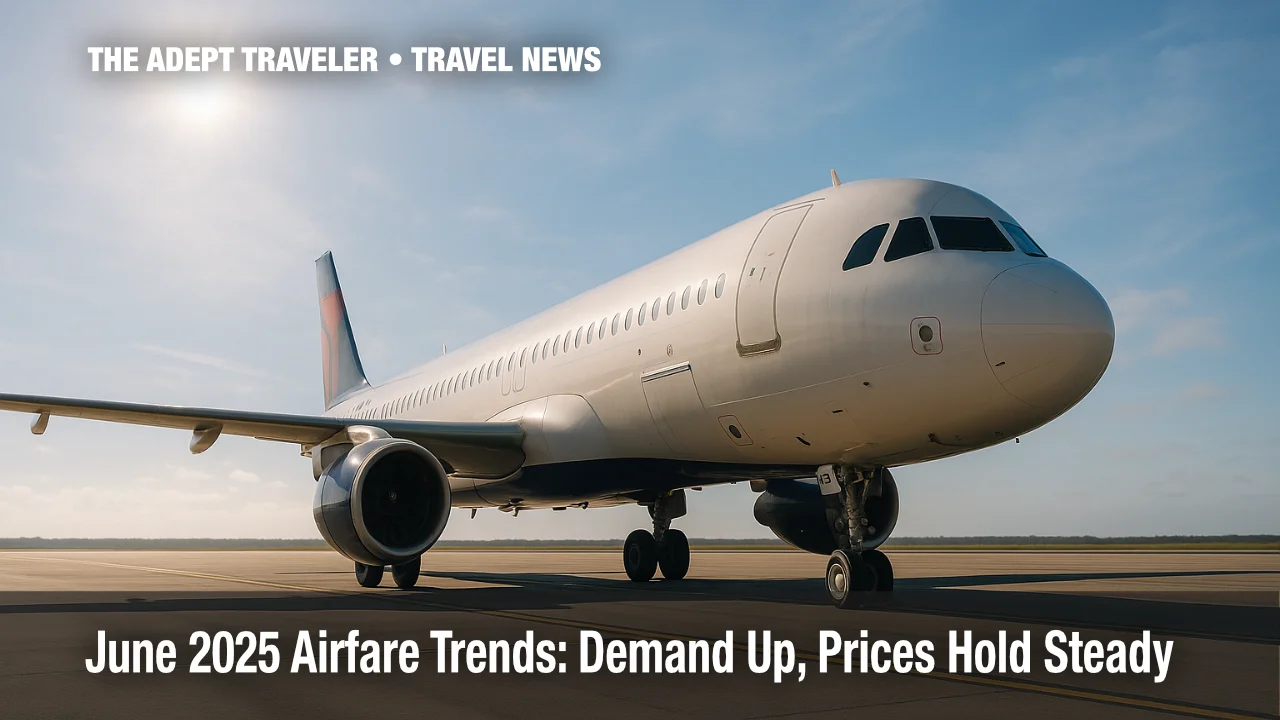June 2025 Airfare Trends: Demand Up, Prices Hold Steady

U.S. air ticket sales plateaued at $7.6 billion in June 2025 even as nearly 23.4 million travelers took to the skies. Airlines Reporting Corporation's latest figures reveal that demand is still climbing while prices are inching up only modestly. For travelers, the takeaway is clear: seats are filling fast, but there are still ways to keep costs in check if you know where to look.
Key Points
- Why it matters: Strong demand keeps planes full, pressing travelers to plan earlier.
- June's average domestic round-trip cost was $536, just $10 higher than a year ago.
- Year-to-date ticket prices slipped 2 percent, hinting at pockets of value.
- Economy-class fares rose 2 percent; premium-class jumped 4 percent.
- New Distribution Capability (NDC) tickets now account for nearly 22 percent of agency sales.
Snapshot
ARC, the back-office clearinghouse for U.S. travel agencies, processed more than 23 million June passenger trips-up 3 percent year over year. Domestic journeys made up about 14.7 million seats, with international itineraries contributing another 8.7 million. Although monthly sales flattened after four straight declines, the first half of 2025 still reached $52.3 billion. The average round-trip fare settled at $536 in June, while the six-month average fell to $543, a rare dip during prime travel season.
Background
After three years of roller-coaster booking patterns, 2025 opened with cooler inflation and a stronger dollar. Carriers responded by expanding summer schedules and leaning on dynamic pricing to keep yields stable. Agencies, both corporate and leisure, adapted by steering clients toward shoulder-season departures and mixed-cabin itineraries. Meanwhile, airlines accelerated NDC rollouts to push bundled offers directly into agency systems, shaving distribution costs and widening fare choice.
Latest Developments
June's report highlights three notable shifts:
Ticket Prices
Domestic round-trip tickets averaged $536, only 1 percent higher than May and 2 percent above June 2024. Economy tickets hit $493, while premium cabins averaged $1,258. The narrow gap between monthly and yearly comparisons suggests that, despite robust demand, carriers have not imposed the steep summer surcharges many forecasters expected. Travelers willing to fly midweek or connect through secondary hubs are still finding sub-$400 deals, especially on competitive transcontinental routes.
Passenger Demand
Total trips climbed 3 percent year over year, with leisure-oriented online travel agencies posting a 7 percent bump. Business-focused agencies recorded a modest 3 percent dip, signaling that corporate travel remains selective. International growth mirrors the broader rebound in long-haul leisure: itineraries to Europe and Latin America are pacing ahead of 2024 even though entry restrictions have largely disappeared.
NDC Adoption
NDC transactions reached 21.9 percent of all ARC-settled tickets, up from 21.5 percent last June. Nearly 1,000 agencies now issue at least some NDC content. For travelers, this means more granular fare families-think free seat selection or priority boarding baked into the base price-showing up in search results. It also means that the cheapest fare you spot on one platform may not appear on another, heightening the need to compare sources or work with an advisor who aggregates multiple pipes.
Analysis
Strong demand is tightening booking windows: the average domestic trip is now ticketed 26 days before departure, versus 30 days last summer. Prices are steady rather than spiking, but that stability hinges on grabbing seats early. The 2 percent year-to-date price dip suggests airlines are using targeted sales to fill mid-week gaps, particularly in late August and early September. Upgrade costs are rising faster than economy fares, so status-free travelers seeking premium seats should watch for limited-time buy-ups rather than rely on last-minute discounts. Finally, growing NDC distribution can be both friend and foe-bundled offers may deliver better value, yet comparison shopping is harder. Leverage fare-tracking tools, set alerts, or lean on a travel advisor with direct-connect capabilities to ensure you are seeing the full picture.
Final Thoughts
If you plan to fly this fall or over the holidays, lock in tickets sooner rather than later, aiming for mid-week departures and shoulder-season dates where possible. Keep alerts active for fare drops, scrutinize what each fare includes, and do not assume one site shows every option. Understanding June 2025 airfare trends can help you sidestep surprises and keep more cash for the fun part of your trip.
